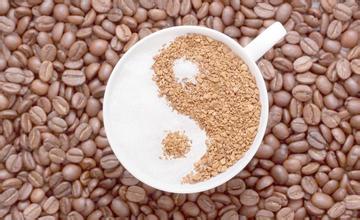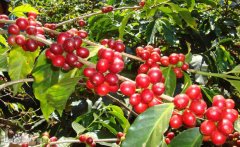How to select coffee beans whether coffee can be directly brewed after grinding
This is very consistent with the first step in judging the freshness of coffee beans. The shape of good quality coffee beans can also be known from their roasted coffee beans. First of all, it must be big and fat beans, and uniform, uniform size, no color spots, low defect rate. There are generally the following kinds of defective beans after baking:
Fermented beans: coffee beans that fall from the soil before harvest. There is a sour smell, which will have a great impact on the taste of coffee.
Dead beans: also known as unripe beans, or affected by climate and other factors are not sound, fried spots will be produced after baking, so that the coffee has a green taste.
Black beans: fermented, rotten, blackened coffee beans. Because it is black, it can be distinguished from normal coffee beans at a glance.
Borer beans: coffee beans eroded by insects.
Defective beans: may be stuck during work, or careless handling during handling, resulting in incomplete coffee beans, this kind of beans will cause fried spots during baking, and will produce bitter and astringent taste.
Others: remaining thin-skinned beans, stunted beans, beans that are not completely sour when dried, shell beans with only shell, and so on.
Observe the purity of coffee beans, generally choose coffee beans with high purity
The purity of coffee beans is also another consideration. The expert candidate for coffee is not necessarily to look at the size of the particles, but to grab a handful of individual coffee beans, about dozens of portions, to see whether the color of each single bean is the same. whether the particles are similar in size and shape, so as to avoid buying shoddy products disguised as mixed beans. But if it is a comprehensive bean, it is normal to have different size and color.

Important Notice :
前街咖啡 FrontStreet Coffee has moved to new addredd:
FrontStreet Coffee Address: 315,Donghua East Road,GuangZhou
Tel:020 38364473
- Prev

Coffee beans are classified as coffee semi-washed
Coffee was the first product to be labeled Fair Trade, and coffee farmers got a real benefit from it. Chilean FLO compliant producers sold coffee beans last year for $1.26 a pound, compared with 47.35 cents a pound on the New York Futures Market. However, FLO does not pay directly for products, but rather promotes fairness through
- Next

Panamanian Emerald Manor Rose Summer Coffee beans
Panamanian Emerald Manor Rose Summer Coffee Bean Panama Geisha (Hacienda La Esmeralda) [Origin]: Panama [producing area]: located on the hillside of Mount Baru, the highest peak in western Panama [Manor]: Esmeralda (Emerald Manor) / Hacienda La Esmeralda [Grade]: SHB [growth altitude]: 1450m [treatment]: fine washing
Related
- Does Rose Summer choose Blue, Green or Red? Detailed explanation of Rose Summer Coffee plots and Classification in Panamanian Jade Manor
- What is the difference between the origin, producing area, processing plant, cooperative and manor of coffee beans?
- How fine does the espresso powder fit? how to grind the espresso?
- Sca coffee roasting degree color card coffee roasting degree 8 roasting color values what do you mean?
- The practice of lattes: how to make lattes at home
- Introduction to Indonesian Fine Coffee beans-- Java Coffee producing area of Indonesian Arabica Coffee
- How much will the flavor of light and medium roasted rose summer be expressed? What baking level is rose summer suitable for?
- Introduction to the characteristics of washing, sun-drying or wet-planing coffee commonly used in Mantenin, Indonesia
- Price characteristics of Arabica Coffee Bean Starbucks introduction to Manning Coffee Bean Taste producing area Variety Manor
- What is the authentic Yega flavor? What are the flavor characteristics of the really excellent Yejasuffi coffee beans?

